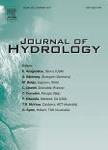版权所有:内蒙古大学图书馆 技术提供:维普资讯• 智图
内蒙古自治区呼和浩特市赛罕区大学西街235号 邮编: 010021

作者机构:Baoji Univ Arts & Sci Comp Sci Dept Baoji Shaanxi Peoples R China Univ Babylon Coll Engn Dept Civil Engn Babylon Iraq King Khalid Univ Coll Engn Dept Civil Engn Abha 61421 Saudi Arabia High Inst Technol Studies Dept Civil Engn Mrezgua Univ Campus Nabeul 8000 Tunisia Univ Teknol Malaysia UTM Fac Engn Sch Civil Engn Johor Baharu 81310 Malaysia Al Ayen Univ Sci Res Ctr New Era & Dev Civil Engn Res Grp Thi Qar 64001 Iraq Univ Teknol MARA Inst Big Data Analyt & Artificial Intelligence IB Shah Alam 40450 Selangor Malaysia
出 版 物:《JOURNAL OF HYDROLOGY》 (水文学杂志)
年 卷 期:2021年第598卷
页 面:126477-126477页
核心收录:
学科分类:08[工学] 0708[理学-地球物理学] 081501[工学-水文学及水资源] 0815[工学-水利工程] 0814[工学-土木工程]
基 金:Deanship of Scientific Research at King Khalid University [RGP 2/173/42]
主 题:Flood prediction Tropical coastal catchment Relevance vector machine Non-linear input selection technique Optimization algorithms
摘 要:Modelling river water level (WL) of a coastal catchment is much complex due to the tidal influences on river WL. A hybrid machine learning model based on relevance vector machine (RVM) and improved grasshopper optimization (IGOA) is proposed in this study for modelling hourly WL in a catchment located in the east coast of tropical peninsular Malaysia. Considering the non-linear relationship between inputs and output, a recursive elimination filter based on support vector machine (SVM-RFE) was employed for the selection of the best combination of inputs from antecedent WL and rainfall data for the prediction of WL one hour ahead. The performance of IGOA was compared with classical GOA and particle swarm optimization (PSO) algorithms. Besides, the performance of the hybrid RVM model was compared with the artificial neural network (ANN) models hybridized with the same optimization algorithms. The SVM-RFE selected 1-, 12- and 24-lags WL data and 1-lag rainfall data as the most potential inputs. The relative performance of the models revealed the reliability of RVM-IGOA in WL prediction of a coastal catchment. Significant improvement of model performance was noticed after optimization using IGOA with Nash-Sutcliff Efficiency (NSE) of 0.986 and 0.981, and Kling-Gupta Efficient (KGE) of 0.981 and 0.974 for RVM-IGOA and ANN-IGOA respectively, compared to the models hybridized using other optimization algorithms with NSE between 0.969 and 0.971, and KGE between 0.890 and 0.908. The study indicates the selection of predictors based on their non-linear relations with WL and better optimization of model parameters can improve model performance in simulation of highly complex hydrological phenomena like tidal river WL in a tropical coastal catchment.